Why Small Space Organization Matters Now More Than Ever
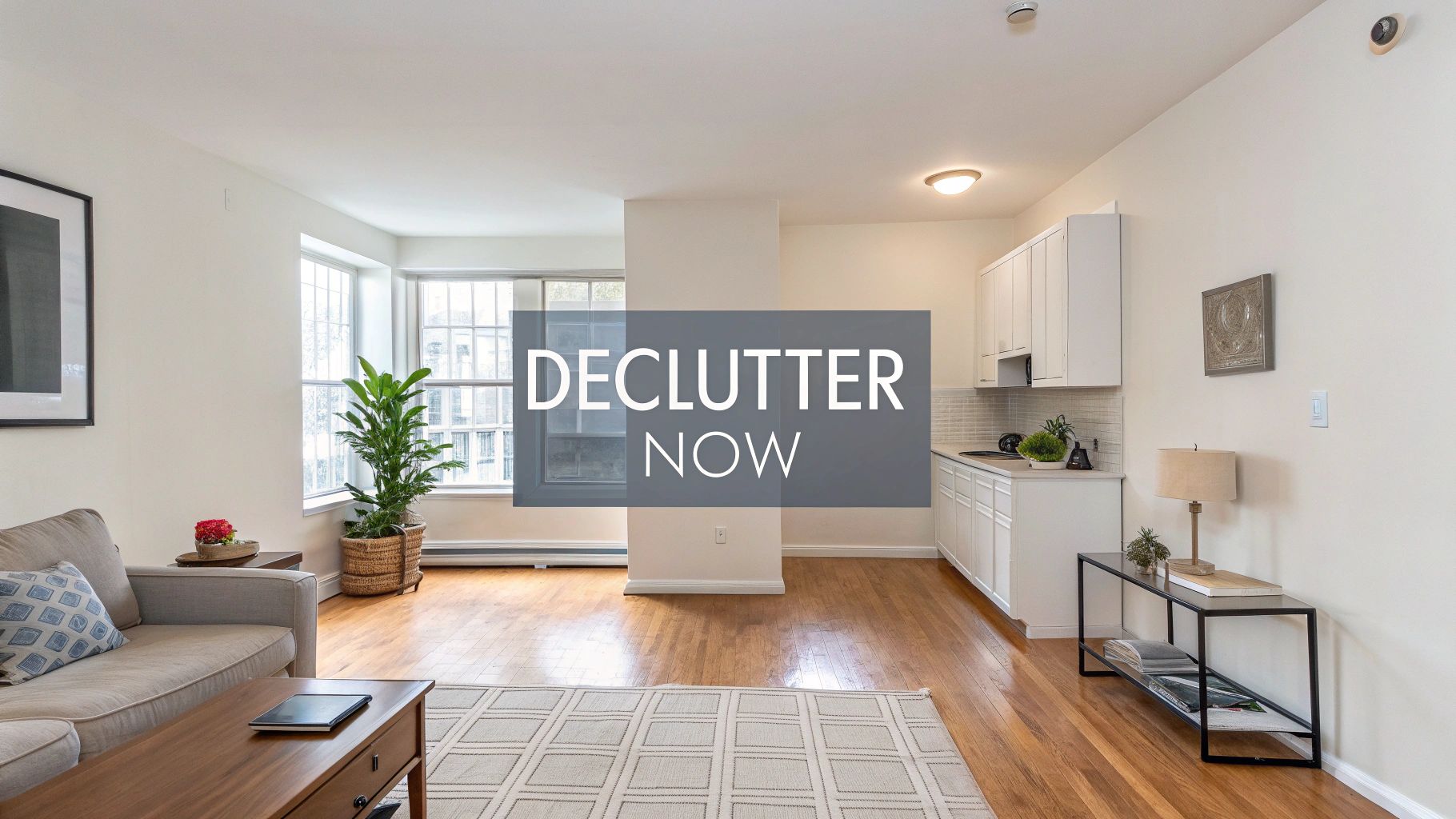
City life, with its bustling culture and job markets, is drawing more and more people to urban areas. This has led to a significant rise in micro-living, where smaller apartments and shared living spaces are increasingly common. Organizing these smaller spaces isn't just about aesthetics anymore; it's essential for comfortable, functional living.
This trend is especially prominent among Millennials and Gen Z, who often prioritize experiences and city conveniences over larger homes in the suburbs. They value walkability, access to restaurants and cultural events, and the overall energy of urban life.
The Impact of Urbanization on Apartment Sizes
The shift toward smaller living spaces is primarily due to rising housing costs in densely populated areas. Affordability is a major factor, making smaller apartments a more realistic choice for many.
For example, in the United States, the majority of renters live in smaller multifamily buildings. As of 2014, about 76% of multifamily renters lived in buildings with 5 to 49 units, outnumbering residents in larger buildings by more than three to one. This underscores the growing need for effective organization in these smaller homes. You can find more detailed statistics at Arbor.
Psychological Benefits of an Organized Small Apartment
Besides the practical advantages of maximizing space, organizing a small apartment offers significant psychological benefits. A clutter-free environment helps reduce stress and improves mental well-being.
A well-organized space promotes a sense of calm and control, which is particularly important in smaller living spaces where visual clutter can quickly become overwhelming. The act of decluttering and organizing can also be a form of self-expression, allowing people to personalize their space to match their lifestyle.
Creative Solutions for Small Space Living
Successfully organizing a small apartment often requires creative solutions. For example, smaller kitchens might benefit from compact small kitchen faucets. Making use of vertical space with shelves and wall-mounted storage can dramatically increase storage capacity.
Multi-functional furniture, like sofa beds with built-in storage or ottomans that serve as coffee tables, can also maximize space and functionality. These strategies not only solve organizational challenges but also offer opportunities for creative expression and personalized design. By adapting to the limitations of smaller spaces, people can create environments that are both functional and visually appealing, fostering a sense of comfort and well-being in their homes.
The Decluttering Foundation: Less Stuff, More Living
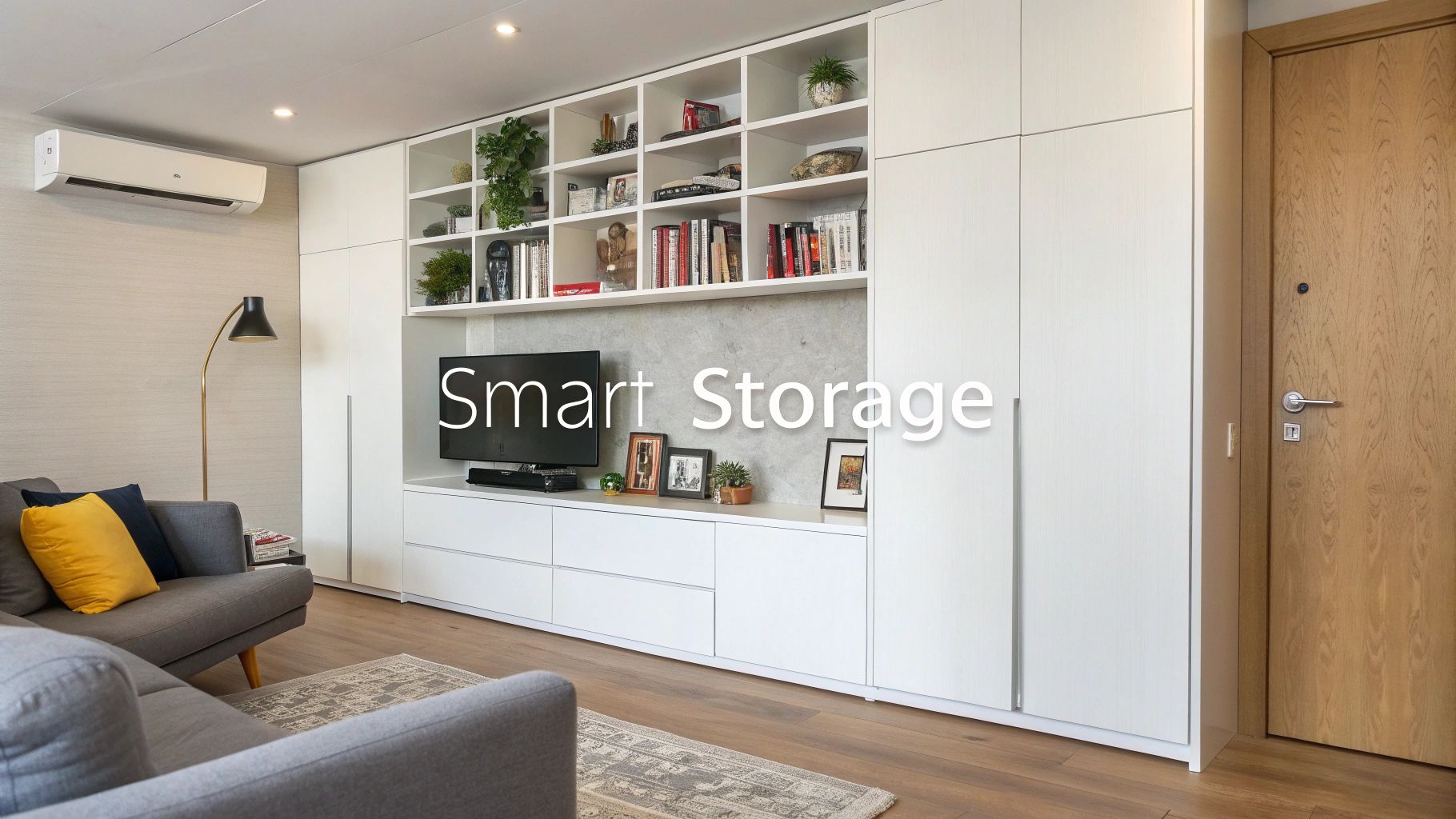
Before diving into storage solutions for your small apartment, let's talk decluttering. It's the essential first step to maximizing limited space. This means taking a good look at what you own and parting with things that no longer serve a purpose. This sets the stage for a truly organized and functional home.
Why Decluttering Is Essential
Decluttering isn't just about tidying up. It's about creating a healthier relationship with your possessions. In a small apartment, extra clutter can quickly make you feel overwhelmed and stressed. Imagine trying to relax in a living room overflowing with unused items. It's not exactly peaceful.
Decluttering also clears the way for effective organization systems. It helps you see your space's true potential and make smart choices about storage. This foundation will ultimately lead to a more functional and enjoyable living environment.
Practical Decluttering Methods
One effective decluttering method is the "Keep, Donate, Trash" system. Sort through your belongings, putting each item into one of these three piles. This simple approach helps you make decisions and prevents emotional attachments from getting in the way.
Another helpful technique is the "One In, One Out" rule. When you bring something new into your apartment, get rid of something similar. This prevents future clutter and encourages mindful consumption. Check out this helpful article: How to master the 'one in, one out' method for a clutter-free apartment.
Overcoming Decluttering Hurdles
Many people struggle with decluttering because of sentimental attachments. However, maximizing space in small apartments, particularly studio apartments, requires decluttering, smart storage, and creative space usage. The first step is always decluttering—removing unwanted or unused items. Sorting into ‘Keep,’ ‘Donate,’ and ‘Trash’ piles makes decisions easier. After decluttering, using vertical space with shelves and hooks maximizes floor area, creating a more open feel. Optimizing closet space with smart storage solutions further reduces clutter and improves functionality. Learn more about maximizing space in a studio apartment.
To overcome sentimental attachments, ask yourself: Do I use this regularly? Does it bring me joy? Does it have a practical purpose? If the answer is no to all three, it might be time to let it go.
Another challenge is the fear of regret. Create a "maybe" box for items you're unsure about. If you haven't needed them after six months, donate or discard them. This gives you a safety net and makes decluttering less daunting.
Developing Sustainable Habits
Decluttering isn't a one-time fix; it's an ongoing process. Developing sustainable habits is key. Regularly assess your belongings and be mindful of what you bring into your apartment. By making decluttering part of your routine, you can maintain a clutter-free and organized small apartment.
Vertical Victories: Making Your Walls Work Harder
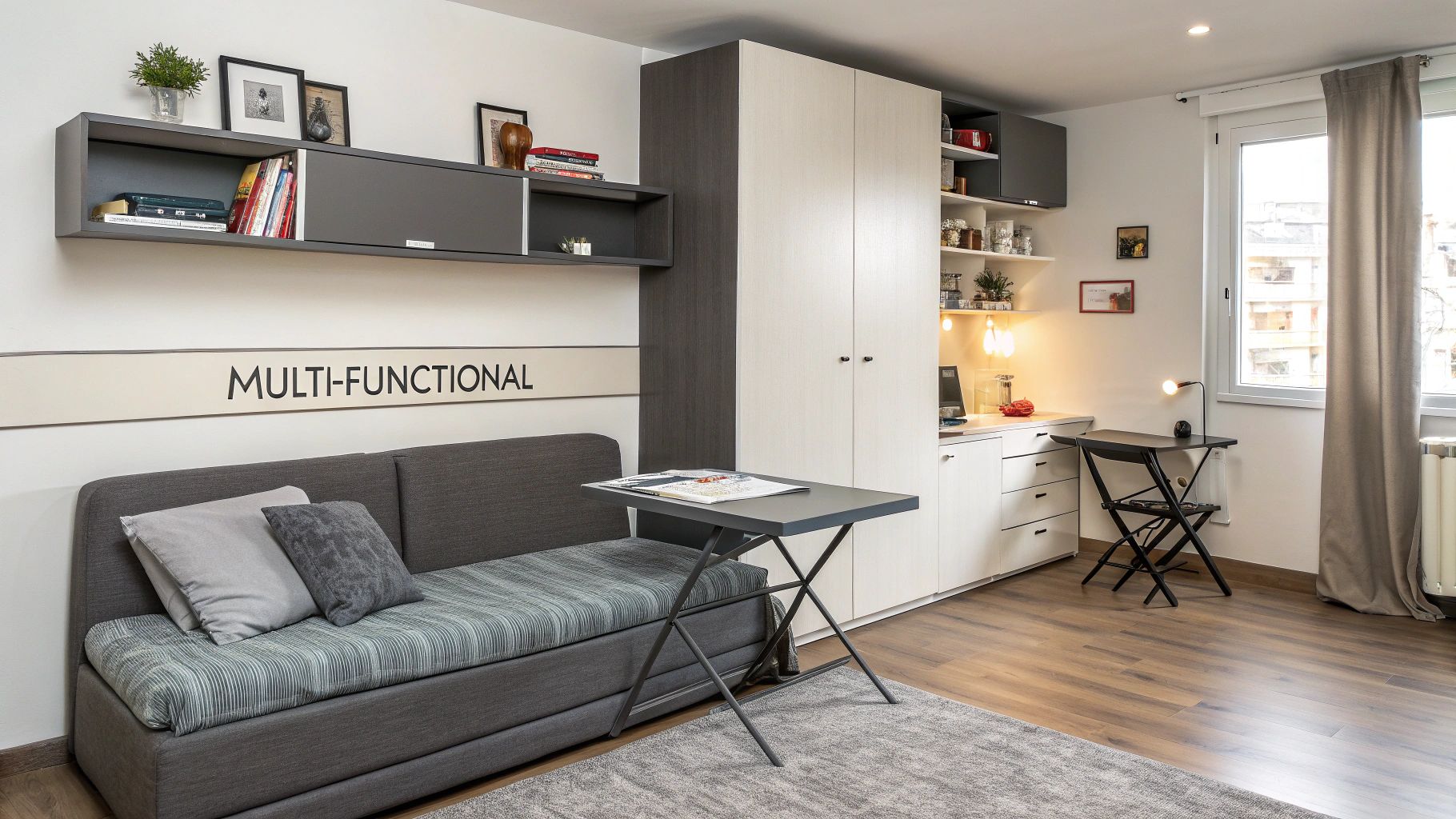
Living in a small apartment often means limited floor space. However, your walls offer a wealth of untapped potential. Instead of basic shelving, consider a strategic approach to vertical storage. This allows you to truly maximize every precious inch.
Assessing Your Wall Real Estate
Begin by carefully evaluating your walls. Don't just focus on large, empty areas. Look at awkward corners, the space above doorways, and even the sides of furniture. These often-forgotten spots can become prime storage real estate.
For example, a narrow wall between a doorway and a window might seem useless at first glance. But it could be ideal for a slim, wall-mounted bookshelf. Alternatively, it could hold a series of hooks for coats and bags. Even the space above a toilet can house a small cabinet for toiletries.
Installation Techniques for Renters
Many renters worry about damaging walls and losing their security deposit. This can make them hesitant to install wall storage. Luckily, there are renter-friendly installation methods that minimize modifications.
- Adhesive Hooks and Strips: Perfect for lightweight items like pictures, mirrors, and small shelves. These come off easily without leaving any sticky residue.
- Tension Rods: Create instant hanging storage inside closets or between walls. A simple solution for clothing and accessories.
- Over-the-Door Organizers: Maximize storage on the backs of doors. These provide valuable space for shoes, toiletries, and pantry items.
Maximizing Safety and Style
When installing vertical storage, weight distribution is crucial for safety and preventing damage. Place heavier items on sturdier shelves. Whenever possible, mount these shelves securely to wall studs.
Also, consider how your storage blends with your decor. Floating shelves offer both function and style, displaying books, plants, or artwork. Matching the color of your storage to your walls creates a cohesive look, making them less visually prominent. Organizing a small apartment effectively involves creative use of space. Learn more about small apartment organization. Vertical solutions like floating shelves and wall-mounted cabinets provide extra storage and enhance aesthetics.
Room-by-Room Vertical Solutions
Different rooms benefit from tailored vertical storage approaches. You might find additional tips helpful: How to master small space organization
- Kitchen: Wall-mounted spice racks, magnetic knife strips, and hanging pot racks free up valuable counter and cabinet space.
- Bathroom: Shelves above the toilet, a hanging shower caddy, and wall-mounted toothbrush holders maximize limited storage.
- Living Room: Floating shelves for books and decor, wall-mounted TV consoles, and vertical storage units for media and other items help maintain a clutter-free living area.
Thinking vertically and strategically using your walls significantly increases storage. This helps create a more organized and functional small apartment.
Furniture That Does Double Duty (Or Triple)
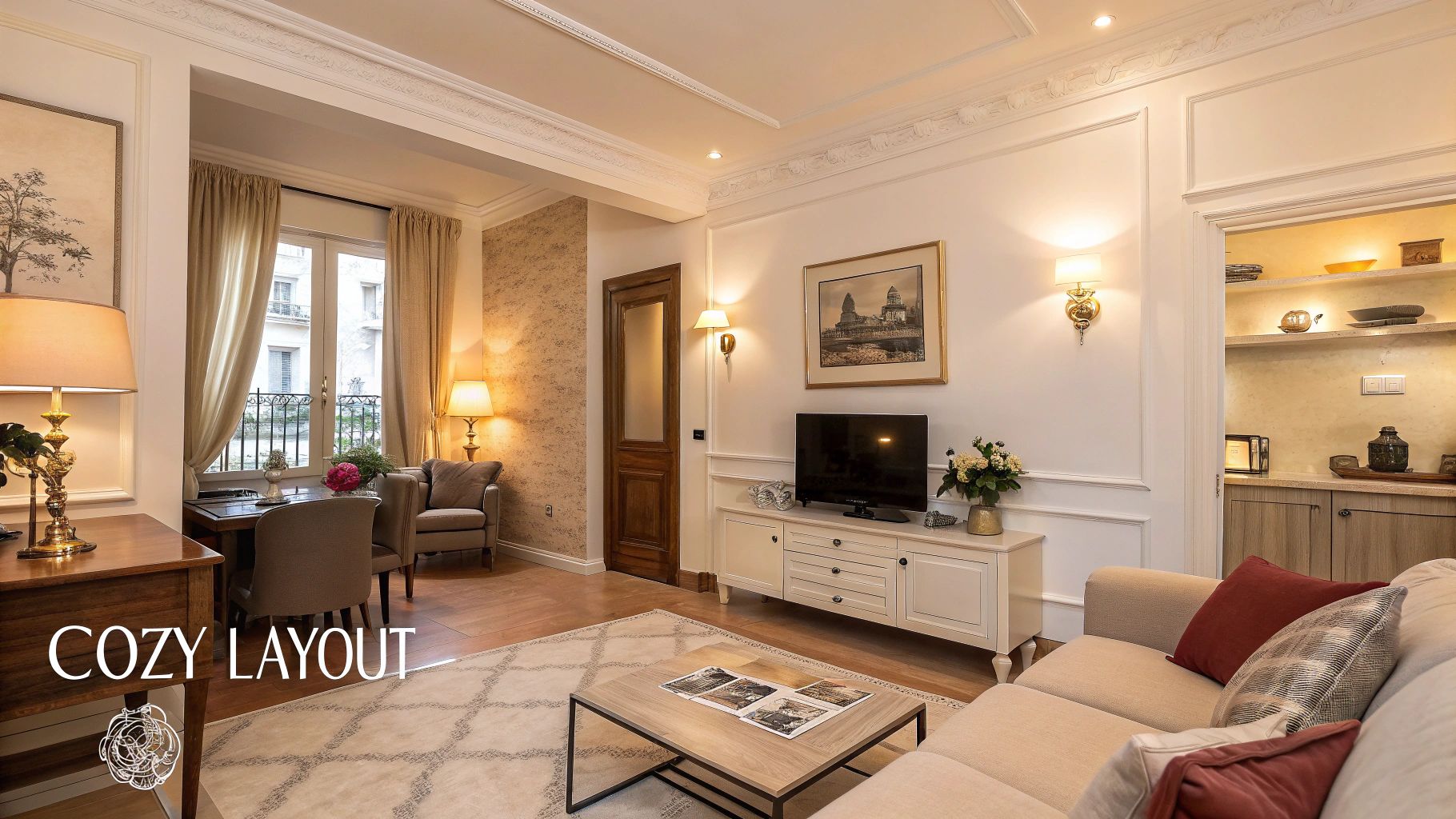
In a small apartment, furniture with just one function can feel like an impossible luxury. This is where the magic of multifunctional furniture comes in. Think outside the box of the typical sofa bed. Discover pieces that seamlessly blend multiple functions without sacrificing style or comfort. This is essential for efficiently organizing a small apartment.
Choosing The Right Multifunctional Furniture
Not every piece of multifunctional furniture is a winner. Some offer real space-saving solutions, while others miss the mark. A storage ottoman that doubles as a coffee table provides valuable hidden storage, for example. But a bulky convertible desk that’s hard to transform might be more trouble than it's worth.
The key is to choose furniture that truly fits your lifestyle and needs. Ask yourself practical questions: Will you actually use all the functions regularly? Is it easy to transform? Does it fit comfortably in your space?
Smart Strategies For Arranging Transformable Furniture
Think about the flow of your apartment and how furniture placement impacts your daily movement. A sofa bed should be easy to access and unfold without requiring a complete room rearrangement.
A dining table that converts into a desk should be placed in an area suitable for both work and meals. Easy access to storage within multifunctional furniture is also crucial. Avoid designs that require difficult maneuvering or heavy lifting. This ensures your furniture helps, not hinders, your daily routine.
Evaluating Popular Options And Price Points
Before buying multifunctional furniture, it's wise to check reviews and compare different options. Look for feedback on durability, transformation ease, and real-world practicality. You might find this resource helpful: How to master small space organization using multi-functional furniture. Consider these key factors:
- Durability: Can the furniture withstand regular use and transformations?
- Mechanism: Is the transformation smooth and easy to use?
- Functionality: Does the piece truly fulfill its intended dual (or triple) purpose?
The table below provides a comparison of popular space-saving furniture choices for smaller apartments, considering their cost, space-saving capabilities, and other important factors.
Multi-Functional Furniture Comparison
| Furniture Type | Space Saving Potential | Average Cost Range | Best For | Considerations |
|---|---|---|---|---|
| Sofa Bed | High | $500 – $2000+ | Living Rooms | Comfort and ease of transformation are key. |
| Storage Ottoman/Coffee Table | Medium | $150 – $500+ | Living Rooms | Ensure sufficient storage capacity. |
| Murphy Bed | High | $1000 – $3000+ | Bedrooms | Requires adequate wall space and installation. |
| Drop-Leaf Dining Table | Medium | $200 – $1000+ | Dining Areas | Consider the stability when fully extended. |
| Desk with Hidden Storage | Medium | $250 – $750+ | Home Offices | Assess the type and amount of storage needed. |
As shown in the table, there are many options available at different price points. Choosing the right furniture depends on your individual needs and space considerations.
By carefully considering your needs and the available choices, you can select multifunctional furniture that truly elevates both the functionality and style of your small apartment. This allows you to create a living space that is both practical and a reflection of your personal style.
The Mind-Space Connection: Psychology of Small Spaces
Our living space has a deep impact on our mental well-being, especially in smaller apartments. Environmental psychology shows us that visual clutter affects our focus, mood, and overall how we feel. This effect is even stronger in small spaces where everything is close together. Organizing a small apartment, then, becomes essential for a healthy mind.
How Disorganization Impacts Your Mind
Clutter isn't just an eyesore. It represents things left undone, creating a sense of being overwhelmed. This can lead to several negative impacts.
- Increased Stress: Living surrounded by clutter can trigger a constant low-level stress response. This impacts sleep and your overall health.
- Reduced Focus: Visual clutter pulls at your attention, competing with your tasks. This can make concentrating difficult and hurt productivity.
- Lowered Mood: A messy space can make you feel frustrated and anxious, and even contribute to feelings of depression.
Organizing a small apartment isn't just about making it look nice. It's about creating a personal sanctuary that supports your mental and emotional health.
The sheer amount of stuff in the average American home can add to feelings of being overwhelmed. The average American home contains roughly 300,000 items. This makes organizing a challenge, particularly in a small apartment. Because of this, professional organizing services have become more popular, with the industry valued at about $11.4 billion in 2021. You can find more detailed statistics here.
Why Traditional Organizing Methods Often Fail
Many traditional organizing methods don't consider individual personalities and attachment styles. Some people like highly structured systems, while others prefer a more flexible approach. Understanding how you naturally function is key to creating a system that works for you.
For instance, if you are sentimental, a strict minimalist approach could cause more stress than relief. Instead, focus on keeping items you truly value, and finding clever storage solutions for treasured possessions.
Creating Personality-Aligned Systems
Successfully organizing a small apartment means developing systems that match your personality. This involves a few key steps:
- Honest Self-Assessment: Figure out your organizing strengths and weaknesses. Are you a naturally tidy person, or do you tend to put things off?
- Customizing Methods: Adjust organizing methods to fit your specific needs. Don’t force yourself into a system that doesn't feel right.
- Building Sustainable Habits: Create habits you can keep up over time, instead of temporary fixes that quickly fall apart.
This approach leads to long-term organization and a space that supports your physical and mental well-being. It's about creating a living space that reflects your lifestyle and promotes a sense of calm and control. By understanding the psychology of small spaces and making personalized strategies, organizing becomes less of a chore and more of a journey towards a more peaceful and productive life.
Room-by-Room Organization That Actually Works
Organizing a small apartment isn't about generic tips. It's about creating personalized systems for each specific area of your home. Let's explore practical solutions for every room, focusing on making the most of your unique space and lifestyle.
Kitchen Organization: Maximizing Every Inch
Small kitchens often present unique storage challenges. Limited counter and cabinet space can make cooking and storage feel impossible. But with a little strategic organization, even the tiniest kitchen can become a highly functional and enjoyable space.
-
Maximize Vertical Space: Install wall-mounted shelves for spices, a hanging pot rack, and adhesive hooks for utensils. This frees up valuable counter and cabinet space for everyday use.
-
Under-Sink Solutions: Use stackable drawers or tiered organizers to maximize vertical storage under the sink. This is a great way to contain cleaning supplies and other essentials.
-
Inside Cabinet Doors: Hang organizers on the inside of cabinet doors to store lids, cutting boards, or cleaning supplies. This utilizes often-overlooked space.
Bathroom Organization: Streamlining Your Routine
Bathrooms, despite their small size, often hold a multitude of items. Effective organization keeps these essentials readily accessible without sacrificing precious space.
-
Over-the-Toilet Storage: Install a shelf or cabinet above the toilet for toiletries, towels, or extra toilet paper. This utilizes otherwise wasted space.
-
Shower Caddies: Use a hanging shower caddy or install corner shelves to keep shampoos, conditioners, and soaps within easy reach while showering.
-
Drawer Dividers: Organize drawers with dividers to separate makeup, toiletries, and other small items. This prevents clutter and makes finding things much easier.
Living Area Organization: Creating Zones for Different Functions
Multi-purpose living areas require careful zoning to maintain distinct functions–like working, relaxing, and entertaining–without feeling chaotic.
-
Define Zones with Rugs: Use rugs to visually separate areas for different activities, such as a seating area, a dining area, or a workspace.
-
Multi-Functional Furniture: Choose furniture that serves multiple purposes, such as a sofa bed with storage or an ottoman that doubles as a coffee table.
-
Vertical Storage Units: Use tall, narrow storage units to maximize vertical space and keep items organized and out of sight.
Bedroom Organization: Balancing Storage and Serenity
Bedrooms in small apartments often double as sleeping sanctuaries and storage hubs. Balancing these dual functions requires thoughtful planning.
-
Under-Bed Storage: Utilize under-bed storage containers to store out-of-season clothing, extra bedding, or other infrequently used items.
-
Vertical Nightstands: Choose tall, narrow nightstands with drawers or shelves for storage. This maximizes vertical space beside your bed and keeps essentials organized.
-
Closet Organizers: Maximize closet space with shelves, drawers, and hanging organizers. These tools will help keep clothing and accessories neatly organized and easy to access.
The following table provides a helpful overview of small apartment storage solutions, broken down by room:
Small Apartment Storage Solutions by Room
| Room | Common Challenges | Space-Saving Solutions | Budget Options | Investment Pieces |
|---|---|---|---|---|
| Kitchen | Limited counter & cabinet space | Wall shelves, hanging pot rack, hooks | Adhesive hooks, drawer dividers | Tiered organizers, custom cabinets |
| Bathroom | Clutter, limited storage | Over-toilet storage, shower caddies | Shower caddy, drawer dividers | Custom shelving, vanity organizers |
| Living Area | Defining zones, maximizing space | Rugs, multi-functional furniture | Storage ottomans, bookcases | Modular shelving units |
| Bedroom | Dual function: sleep & storage | Under-bed storage, vertical nightstands | Storage bins, closet rods | Built-in wardrobes, custom drawers |
This table highlights key storage challenges in each room and offers both budget-friendly and investment-worthy solutions. By considering these options, you can tailor your approach to fit your specific needs and budget.
By addressing the specific challenges of each room, you can create an organized and functional small apartment that feels spacious and comfortable. It’s not just about fitting everything in; it’s about creating a space that truly works for your lifestyle and supports your overall well-being. Remember, organizing a small apartment is a personal journey, so adapt these tips to your specific needs and preferences.
Ready to transform your small apartment into an organized oasis? Check out LAMU, your go-to resource for innovative home organizers and storage solutions.


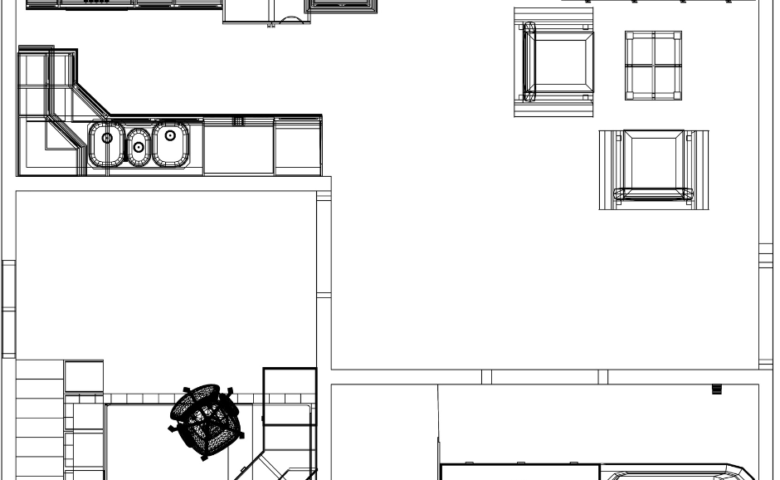


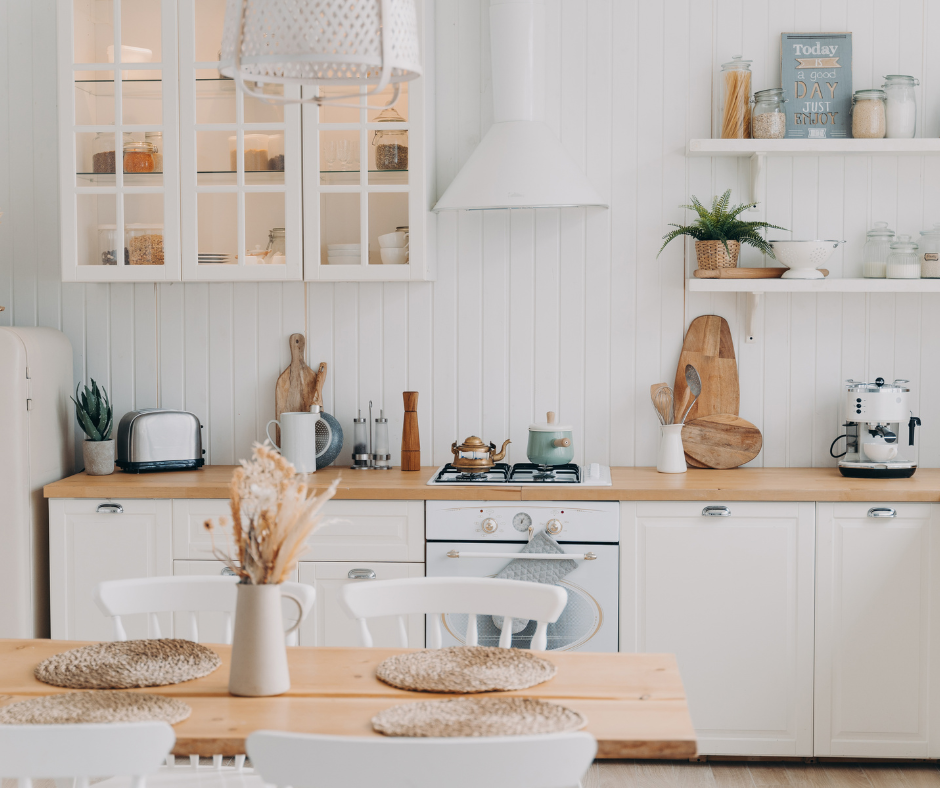
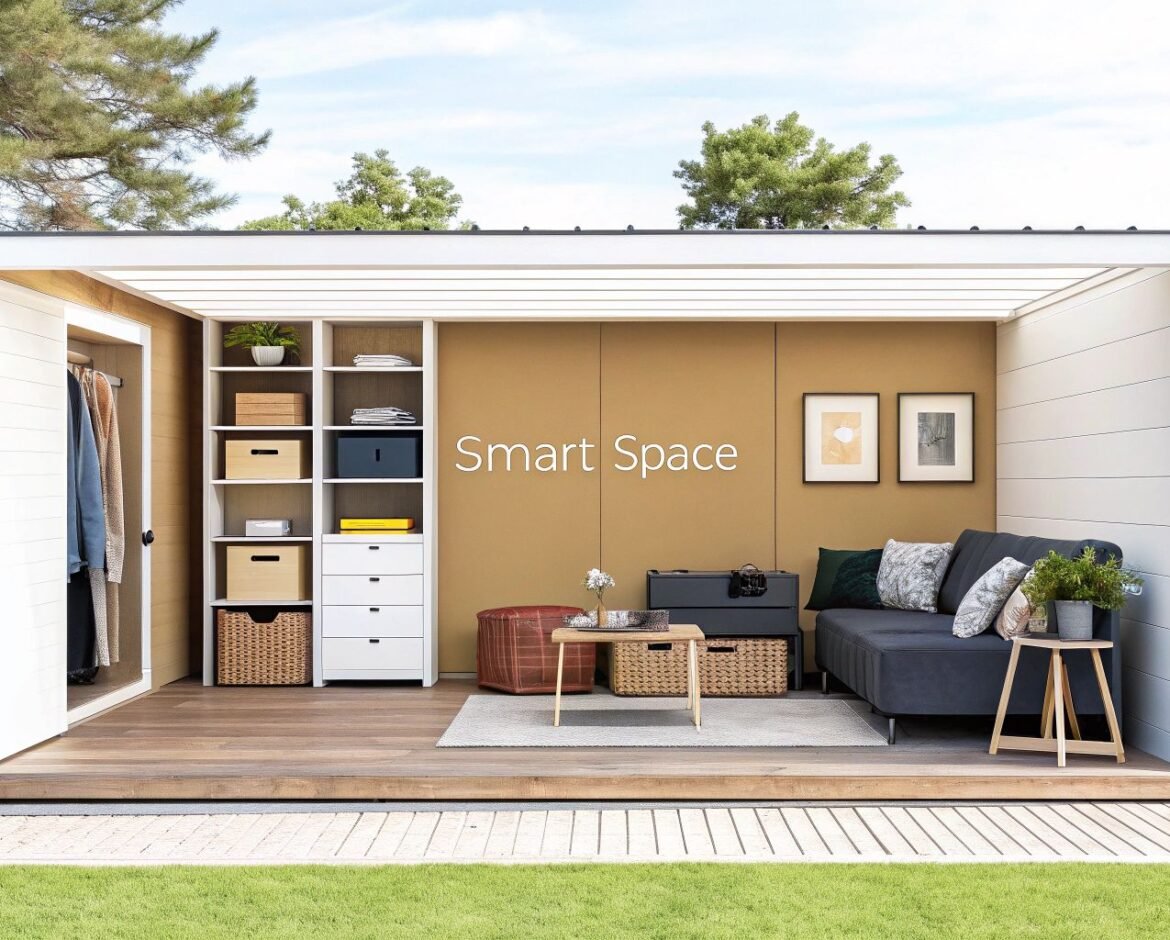

Leave a comment